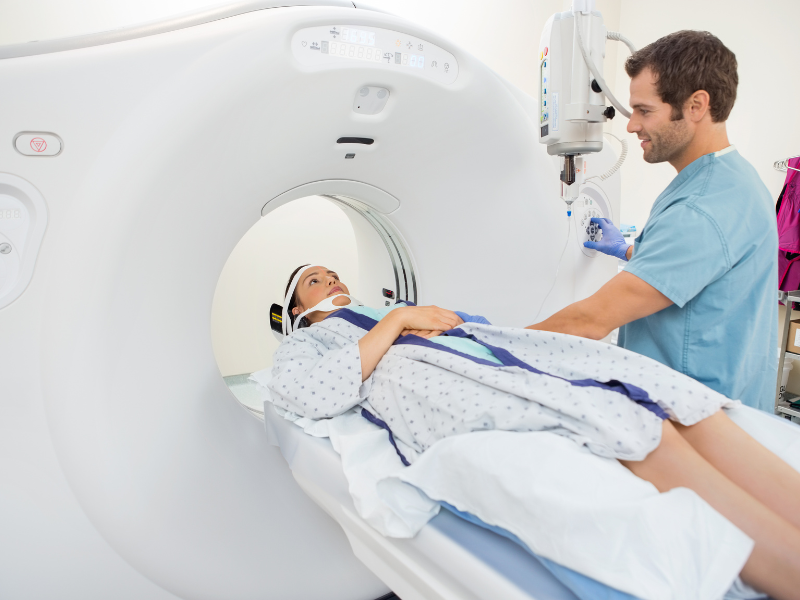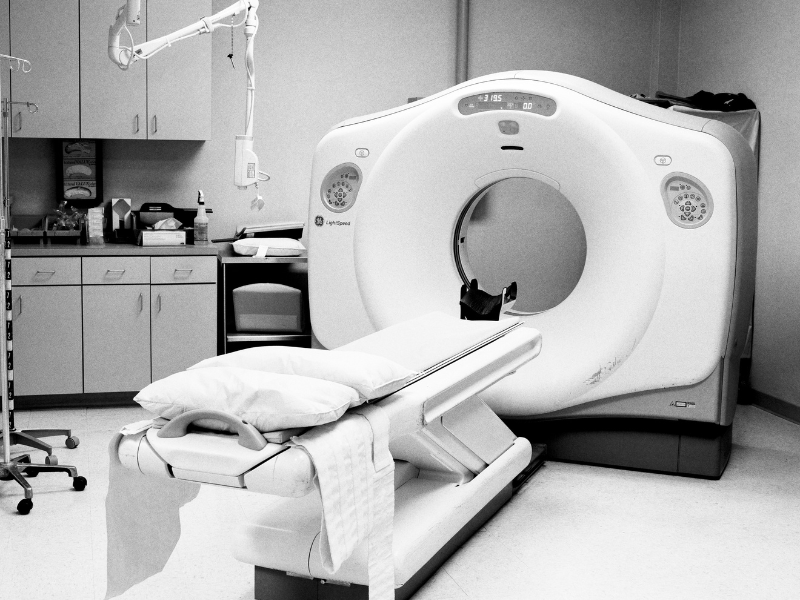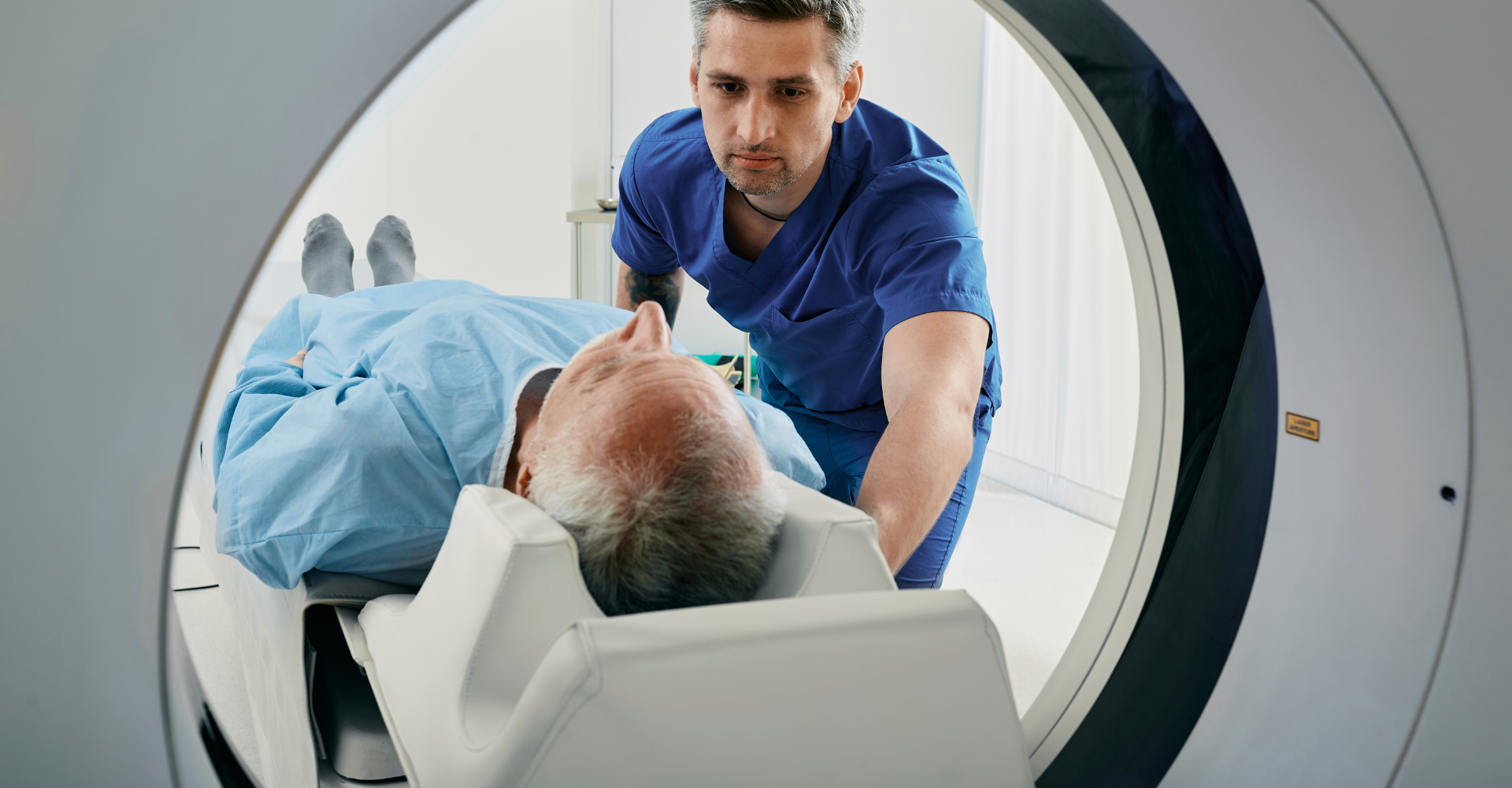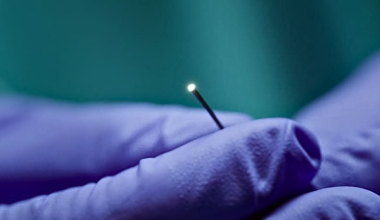If you’ve ever been injured or found a suspicious lump in your body, chances are you’ve had an imaging exam. One of the miracles of modern medicine must be the ability of diagnosticians to see incredibly detailed images of the insides of our bodies to identify injuries, illnesses, or other medical issues.
Among the diagnostic tools doctors turn to the most are CT scans and MRIs. But what’s the difference between them, and when or why does a physician choose one over the other?
Understanding how these tools work and when they’re used can help demystify the process and give you confidence if your doctor ever recommends one.
What Is a CT Scan?

A CT scan uses X-rays to create detailed 3D images of your body. A CT scan is best for quickly assessing bone structures, detecting fractures, internal bleeding, or acute trauma situations due to its speed and ability to visualize dense tissues like bone. Here’s how it works:
- X-Ray Emission: The CT scanner is a large, doughnut-shaped machine with an X-ray tube inside. As you lie on a table that slides into the scanner, the X-ray tube rotates around your body, emitting small doses of X-rays.
- Data Collection: These X-rays pass through your body and are absorbed differently by various tissues. Dense materials like bones absorb more X-rays, while softer tissues like muscles or organs absorb less. Detectors inside the machine capture the X-rays that pass through.
- Image Reconstruction: A computer processes the captured data and assembles it into detailed cross-sectional images (or slices) of your body. These slices can even be stacked to create a 3D view of your internal structures.
- Contrast Agents (Optional): Sometimes, a contrast dye is used to make certain areas, like blood vessels or organs, easier to see. This dye can be injected, swallowed, or both, depending on what your doctor needs to examine.
The entire process is fast—usually only a few minutes—making CAT scans an excellent choice for emergencies like detecting internal bleeding or assessing fractures.
What Is an MRI?

An MRI is better for detailed imaging of soft tissues like muscles, ligaments, nerves, tendons, and organs. Offering excellent contrast resolution, it uses powerful magnets and radio waves to create detailed images. Here’s a brief overview of the process:
- Magnetic Field: The MRI machine uses a strong magnetic field to align the hydrogen atoms in your body.
- Radio Waves: The machine then sends radio waves into your body, which disturb the alignment of these atoms.
- Signal Detection: As the hydrogen atoms return to their original alignment, they release signals. The MRI machine detects these signals and uses them to create highly detailed images.
- Contrast Agents: Like CT scans, MRIs may involve a contrast dye to highlight specific tissues or blood vessels.
The process takes longer than a CT scan (15–90 minutes) and is noisier, but it’s particularly effective for examining soft tissues, brain conditions, and spinal issues.
CT vs. MRI: Key Differences
| How It Works | What They’re Best For | Speed | Radiation | What to Expect | |
| CT Scan | Uses X-rays and computer technology. | Ideal for examining bones, lungs, and emergency cases requiring speed. | Quicker, taking just a few minutes. | Uses a small dose of radiation. | Quick and painless. You’ll lie on a table that moves through a large, doughnut-shaped scanner. If a contrast dye is used, you might feel a warm sensation. |
| MRI | Uses magnetic fields and radio waves. | Better for soft tissues, such as muscles, nerves, and the brain. | Take longer, sometimes up to 90 minutes. | Does not use any radiation. | It’s louder and takes longer. It can feel more confined since the scanner is a long tube. People with metal implants may not be able to have an MRI. |
Accessing CAT Scans and MRIs in Canada
- Public Healthcare: Both are covered by provincial health plans if ordered by a doctor. However, wait times can vary widely based on urgency and location.
- Private Clinics: About 10% of Canadians decide to take their diagnostic imaging needs to the private healthcare sector, primarily due to long wait times to get imaging via the public system. Private imaging clinics in Canada and across the border offer faster access and may offer more state-of-the-art machines. These services are not covered by public healthcare however the cost may be reimbursed by private insurance. Check with your provider to determine if you’re eligible.
According to the Canadian Agency for Drugs and Technologies in Health, as of 2022, the typical costs of private MRI’s and CT Scans in Canada are:

New Advances in MRI and CT Scan Imaging
Other than shorter wait times, one of the most compelling reasons to consider paying out-of-pocket for an MRI or CT scan is to access state-of-the art technology. Here are some recent advancements in MRI and CT technology that may be of interest as you scope out the best solution for your needs with your healthcare provider.
Ultra-High Resolution Imaging
As technology advances, so does the power of imaging. Ultra High-resolution MRI and CT scanning machines produce much more detailed images of the body than older machines, in a much faster time frame. Both can visualize smaller structures in the body and provide more information about the condition of blood vessels and other tissues. which is beneficial for many illnesses such as coronary heart disease,
Real-Time MRI
Real-time MRI technology allows for the continuous capture of moving structures, providing dynamic imaging capabilities. This is particularly beneficial in cardiac imaging, where it enables visualization of the beating heart without the need for breath-holding or electrocardiogram synchronization. It also has applications in musculoskeletal studies and speech research.
Photon-Counting CT
Photon-counting CT is a significant leap in imaging technology. Unlike traditional CT detectors, photon-counting detectors measure individual X-ray photons, leading to higher resolution images, which enhances diagnostic accuracy and reduces radiation exposure.
In-System Entertainment
Imagine patient-centric diagnostics! In-system entertainment (also known as in-bore MRI cinema) helps patients reduce anxiety by giving them something to focus on beyond the exam itself.
Instead of experiencing even more medical anxiety due to the loud clicking and thumping noises in the MRI machine, the patient can become immersed in a soothing sound and video experience during the imaging, all while being able to hear voice commands from the technologist.
Top Private Clinics
If you do choose a private clinic for your diagnostics, start below with the top-rated clinics across Canada as determined by Google ratings. Along with researching the highest-rated, make sure you read all the reviews you can find to get a sense of the pros and cons of each facility.
| Clinic Name | Location | Rating |
| Priority Diagnostics | Richmond B.C | 4.7 stars out of 86 reviews |
| Credit Valley Diagnostic Centre | Milton ON | 4.9 stars out of 194 reviews |
| Well Health Diagnostic Centre | Multiple locations across Ontario | 4.8 stars out of 3,000+ reviews |
| Mayfair Diagnostics | Calgary, Cochrane, Regina, Saskatoon | 4.7 stars out of 1,000+ reviews |
| Toronto Ultrasound Imaging | Toronto, ON | 4.9 stars out of 813 reviews |
| True North Imaging | Various locations across Ontario | 4.8 stars out of 4,000+ reviews |
| Insight Medical Imaging | Fort McMurray, AB | 4.8 stars out of 31 reviews |
| Imagix – Radiologie Chateauguay | Chateauguay, Quebec | 4.7 stars out of 420 reviews |
| Moncton MRI | Moncton N.B. | 4.9 stars out of 10 reviews |
| VM Med | Montreal, PQ | 4.7 stars out of 1,971 reviews |
| Notable Clinics Just South of the Border | ||
| Rayus Radiology | Poulsbo, Washington | 4.8 stars out of 700+ reviews |
| Canmax Medical Imaging | Buffalo | 5.0 stars out of 16 reviews |
| Windsong Radiology | Amherst, N.Y. | 4.7 stars out of 579 reviews |
While we all hope that we’ll never have to undergo either an MRI or a CT scan, it’s good to know that we have access to these powerful diagnostic tools. Understanding how they work and when they’re used can make the process less intimidating. If your doctor recommends one, don’t hesitate to ask questions to better understand why it’s the right choice for you.
If you and your healthcare provider feel that the access timeline is too long or that a state-of-the-art machine would be a better option for you, gather the information you need about accessing one publicly vs. privately to make the best decision for your healthcare.
~Read more from The Health Insider~
- The Affordable Superfood Canadians OverlookPacked with protein, fibre and key nutrients, beans are a budget-friendly way to boost health and support local farmers.
- Canada Authorizes First-Ever Oral Treatment for Postpartum DepressionCanada approves ZURZUVAE, the first oral PPD pill. This breakthrough 14-day oral therapy aims to elevate the standard of maternal mental health care.
- The Host Survival Guide: How to Set Boundaries & Delegate for a Stress-Free HolidayStop stressing! This guide offers actionable mental health strategies for hosts, including expert tips on setting boundaries, delegating tasks, and mastering advanced party prep.
- Optometrist vs. Ophthalmologist: Who to See, When and What Your Province Actually CoversStop guessing! This essential guide clarifies the roles of optometrists, ophthalmologists, and opticians, details provincial coverage for you, and sets your eye exam schedule.
- In-Flight & Holiday Comfort: Essential Gear for Stress-Free TravelFrom travel pillows to compression socks, here are the smartest comfort tools to stay rested and stress-free on flights and holiday visits.
- Ozempic, Wegovy and Mounjaro Are Changing Our Food ChoicesAppetite-suppressing GLP-1 medications may be changing the way Canadians eat – Smaller appetites and healthier choices are impacting restaurants and the food supply sector in significant ways.
The information provided on TheHealthInsider.ca is for educational purposes only and does not substitute for professional medical advice. TheHealthInsider.ca advises consulting a medical professional or healthcare provider when seeking medical advice, diagnoses, or treatment. To read about our editorial review process click here.
















